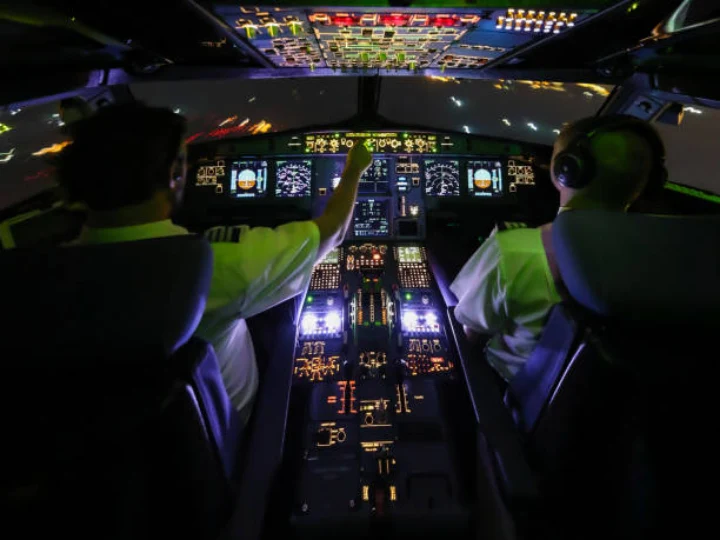The cross-country flight endorsement is a crucial part of a student pilot's training that allows them to fly solo on a cross-country flight (a flight that is at least 50 nautical miles away from the departure point). This endorsement is issued by a certified flight instructor (CFI) after the instructor has assessed the student's readiness for such a flight.
FAA Requirements for Cross-Country Flight Endorsement (14 CFR 61.93):
For a student pilot to conduct a cross-country flight (solo), the FAA requires the following:
- Minimum Distance: The flight must be at least 50 nautical miles away from the departure airport.
- Landing: The flight must include at least one landing at an airport that is different from the departure airport.
- Instructor Endorsement: The student pilot must have an endorsement from their instructor confirming that they are ready to fly the cross-country flight safely.
Process for Cross-Country Flight Endorsement:
-
Training and Preparation:
- The student pilot needs to complete training on navigation, flight planning, and handling a cross-country flight. This includes understanding how to plan the route, check weather, calculate fuel needs, and identify alternate airports.
- The instructor will review the planned route, including airspace considerations, fuel planning, and emergency procedures.
-
Instructor Evaluation:
- The flight instructor will evaluate the student’s ability to navigate, make in-flight decisions, handle the aircraft, and communicate with air traffic control (ATC) if necessary.
- The instructor will also confirm that the student is familiar with VFR (Visual Flight Rules) or IFR (Instrument Flight Rules) procedures as required.
-
Issuance of Endorsement: Once the instructor is satisfied that the student is proficient in handling a cross-country flight, they will issue an endorsement in the student’s logbook, allowing the student to fly solo.
A typical cross-country flight endorsement might look like this:
"I certify that [Student's Name] is proficient and authorized to conduct a cross-country flight, solo, from [Departure Airport] to [Destination Airport] on [Date]. This endorsement is valid for [time frame, if applicable]."
- The endorsement is valid for the specific route or general cross-country flights, depending on what the instructor specifies.
Key Points of the Cross-Country Endorsement:
- Route Planning: The student must be familiar with the route and alternates. They must know how to navigate, including the use of charts, GPS, and/or VOR (radio navigation).
- Weather Awareness: The instructor ensures the student is capable of interpreting weather reports (METARs, TAFs) to ensure safety during the flight.
- Fuel Requirements: The student must be able to properly calculate fuel for the flight, including the required reserve fuel (typically 30 minutes for daytime VFR flights).
- Emergency Procedures: The student should be able to handle in-flight emergencies and understand what to do if they need to divert or make an unscheduled landing.
Validity of Cross-Country Endorsement:
The cross-country endorsement typically lasts for a set period (usually until the student’s next solo flight or until they get their Private Pilot Certificate), but it can also be more general or specific, depending on the instructor's notes. The endorsement can be extended if needed, or a new one can be issued if there are significant changes in the student’s flight training progress or skills.
Solo Cross-Country Flight Requirements:
For a student pilot to fly solo on a cross-country flight, the instructor’s endorsement is required. The flight must meet the following conditions:
- At least 50 nautical miles away from the departure point.
- A landing at an airport other than the departure airport.
- The student pilot must demonstrate proficiency in navigation, in-flight decision-making, and emergency procedures.
Would you like more detailed examples of what a cross-country endorsement looks like, or help with planning a cross-country flight?
CLICK 👉 download 300 aviation books just 1 MB
CLICK 👉 AIRBUS A320 COURSE
CLICK 👉 BOEING 737 PILOT COURSE
CLICK 👉 BOEING 747 PILOT COURSE
CLICK 👉 BOEING 757 PILOT COURSE
CLICK 👉 BOEING 767 PILOT COURSE
CLICK 👉 BOEING 777 PILOT COURSE
CLICK 👉 BOEING 787 PILOT COURSE
CLICK 👉 CESSNA 150 PILOT COURSE
CLICK 👉 CESSNA 152 COURSE
CLICK 👉 CESSNA 162 SKYCATCHER
CLICK 👉 CESSNA 172N SKYHAWK
CLICK 👉 CESSNA 172S COURSE
CLICK 👉 CESSNA 182T SKYLANE
CLICK 👉 ROBINSON R22 COURSE
CLICK 👉 ROBINSON R44 RAVEN II

